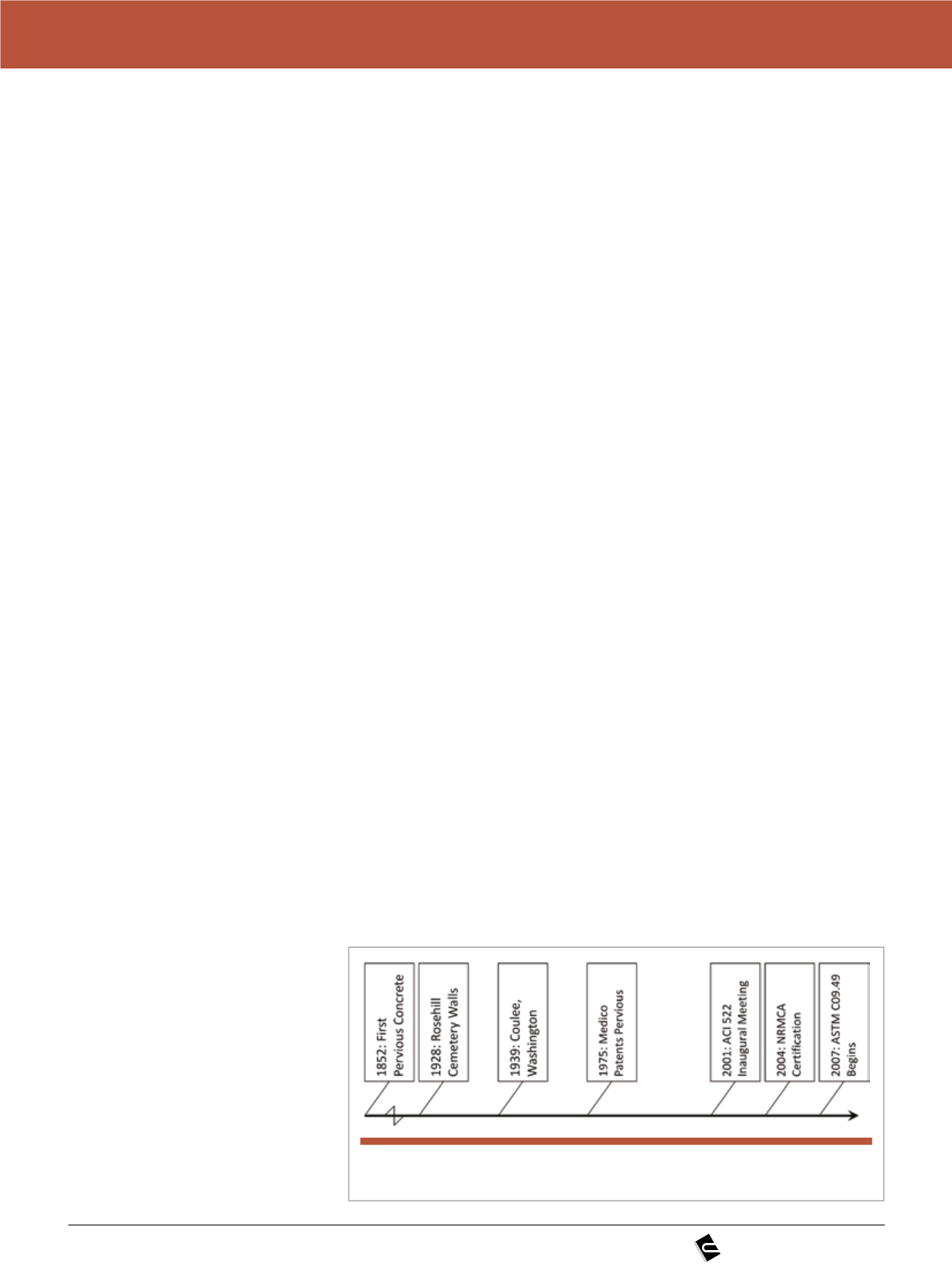
CONCRETO & Construções | 63
and the permeability decreases [FCPA
1990 – Pervious Pavement Manual].
While there are a number of means and
methods for achieving compaction, the
art of the contractor is to use his specif-
ic equipment to work with the concrete
to achieve an optimal density.
1.2 Growth of pervious concrete
In the US, pervious concrete has
seen significant growth since 2001,
both in the marketplace and in the re-
search community. Historically, there
are a few key milestones that have each
contributed to the interest in this tech-
nology. The introduction of the ACI,
NRMCA, and ASTM committees each
had a significant impact on the adop-
tion of pervious concrete.
First, in 2001, the American Con-
crete Institute (ACI) launched commit-
tee 522 on pervious concrete. This
group was tasked with collecting and
documenting the world’s knowledge
on the topic, and eventually develop-
ing guide specifications for pavement
applications [ACI 2013]. The industry
celebrated the release of the first guide
for pervious concrete in 2006, but more
important, this group brought together
all of the minds working on pervious
concrete in North America. So, the
contractors and concrete producers
could network with the engineers and
researchers. This brought about an ex-
plosion of research and knowledge on
the topic.
Then, in 2004, the National Ready
Mix Concrete Association (NRMCA)
launched a program to begin certify-
ing individual contractors in the art of
pervious concrete. The certification
program used the knowledge gathered
by the ACI committee to develop a
book to teach contractors about plac-
ing pervious concrete [NRMCA 2007
- Text Reference for Pervious Concrete
Contractor Certification, Publication
2ppcrt], and developed presentations
and hands-on demonstrations to ac-
company a classroom session. With
three levels of certification, the program
accommodates contractors of all ex-
perience levels to prepare or enhance
their skills for the jobsite. As of this writ-
ing, over 10,000 individuals have been
trained through this program, globally.
In 2007, ASTM created a subcom-
mittee under its Concrete and Ag-
gregates committee, designated as
C09.49. This group was to standardize
test procedures for pervious concrete.
Task groups were formed to work
on testing: fresh density, hardened
density, surface permeability, flexural
strength, compressive strength, and
raveling resistance. Since its inception,
C09.49 has released four standard test
methods, and updated versions total-
ing nine documents.
With ACI giving information to speci-
fiers so they could design pervious con-
crete pavements correctly; the NRMCA
certifying contractors to help them build
high-quality pervious concrete pave-
ments; and ASTM showing the world
how to ensure the pervious pavement
was built to specification, the industry
was well positioned for growth.
2. STANDARDIZED TEST
METHODS FOR PERVIOUS
CONCRETE
With ASTM subcommittee C09.49
developing standardized test methods
for pervious concrete, the goal was
to ensure that stormwater and zoning
regulators, property owners and specifi-
ers had a way to verify that constructed
pavements would perform as designed.
Research shows that one key indica-
tor of quality is concrete density [FCPA
1990, Offenberg 2011]. The first pri-
ority, then, was to document tests for
fresh and hardened density.
The earliest specifications for pervi-
ous concrete included testing the fresh
density as an indicator of concrete qual-
ity. If the concrete was batched and
mixed consistently load-to-load, then
the density of the fresh concrete should
be similar. These early documents re-
quired jigging the concrete as a means
of consolidation.
ASTM’s C09.49 task group, led by
Michael Davy, evaluated six different
methods for compaction of a fresh con-
crete sample in a cylindrical container
with a capacity of 7.0 +/- 0.6 L [0.25
+/- 0.02 ft
3
]. These included: No com-
paction, rodding as described by ASTM
C 138, jigging as described by ASTM
C 29, 20 drops of the Proctor Hammer,
and five and ten drops of the Marshall
u
Figure 1
Timeline of pervious concrete history in the United States


